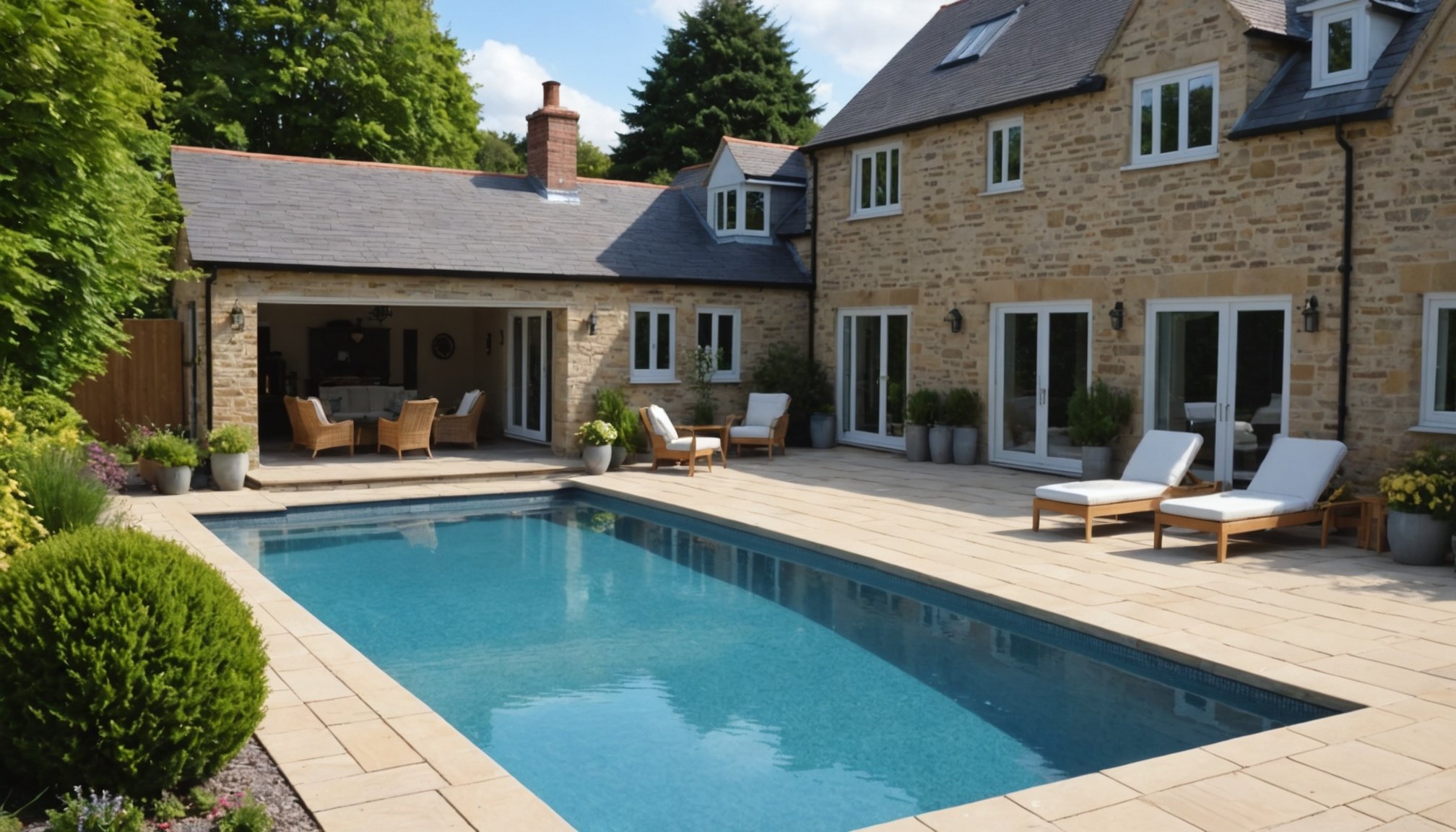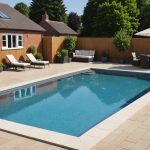Key Design Elements for Contemporary Pool Integration
In the realm of modern pool design, selecting the right materials is crucial. Materials such as glass tiles, smooth concrete, and stainless steel stand out not only for their durability but also for their ability to complement modern lines. Their versatility allows them to adapt effortlessly to various contemporary aesthetics, creating a seamless transition between the pool area and its surroundings.
When considering shapes, the trend leans towards geometric forms. Rectangular and L-shaped pools are popular, offering sleek and clean lines that echo the principles of UK architecture. Such designs align perfectly with the minimalist ethos, creating a harmonious balance between elegance and simplicity.
Cela peut vous intéresser : The Ultimate Guide to the Best Season for Pool Installation in the UK
Color schemes play a pivotal role in enhancing the overall feel of a contemporary pool. Opting for neutral tones like soft grays, whites, and subtle blues can accentuate the structure of the swimming area while maintaining a sense of calm. These hues are adept at reflecting the architectural style of a property’s exterior, ensuring the pool remains an integral part of the home’s aesthetic landscape.
In crafting a successful modern pool, integrating these design elements is key. Each component must cater to both function and aesthetic appeal, ensuring a timeless and cohesive outdoor space.
Cela peut vous intéresser : Creative Strategies for Seamlessly Adding a Spa Area to Your UK Home Swimming Pool
Successful Project Examples
Delving into case studies of remarkable pool designs in the UK reveals fascinating insights into both current architectural trends and inventive solutions. Whether you are seeking pool design inspiration or planning your own aquatic retreat, exploring these projects can offer essential guidance.
One standout example is a modern home in Surrey, which boasts a sleek, infinity edge pool that merges seamlessly with the minimalist architecture of the residence. This design choice not only maximizes aesthetic appeal but also highlights an emerging trend of integrating seamless indoor-outdoor living spaces.
In contrast, a traditional manor in Yorkshire features an indoor pool enclosed with ornate stonework. Unlike the minimalistic design, this approach reflects an emphasis on luxury and intricate craftsmanship, catering to those who prefer opulence and tradition.
Key takeaways from these projects include:
- Embracing the environment: Whether modern or classic, the best pool projects harmonise with their surroundings.
- Prioritising functionality and style: Well-designed pools consider user needs without compromising on visual appeal.
- Innovating with materials: Using sustainable and locally sourced materials can add uniqueness and reduce the environmental impact.
Such notable projects underscore the importance of thoughtful integration of pools in architecture and serve as an endless source of inspiration.
Blending Pools with Landscape
Creating a seamless connection between your pool area and existing landscape involves thoughtful planning and design. Key to this process is landscape integration, which ensures your outdoor spaces feel harmonious and natural.
To begin, consider techniques such as incorporating natural stone, plants, and water features that echo existing garden elements. Selecting materials and colors that blend with the surroundings can help the pool harmonize with the environment, rather than starkly stand out.
Equally important is considering local flora and fauna. Designing with native plants not only supports local wildlife but also lends authenticity and ease of maintenance to the outdoor space. Indigenous species will thrive with less effort, and their adaptation to the climate means they contribute to the ecological balance.
Think about creating a flow between pool and other outdoor living spaces. This might involve aligning the pool decking with patio finishes, or using similar materials across different features. Strategically placed pathways or shared materials between these spaces create coherence, making your overall landscape feel connected and intentional.
In summary, focus on integrating elements thoughtfully, ensuring that each component of your outdoor area works in harmony with both its immediate surroundings and the broader landscape.
Local Regulations and Compliance
In the United Kingdom, pool regulations are essential to ensure safety and efficiency in pool construction. Compliance with these regulations involves adhering to specific building guidelines designed to protect users and maintain environmental standards. One key aspect is obtaining the necessary permits and approvals before construction begins, which include checks on safety measures, environmental impact, and construction quality.
Understanding the local regulations can significantly influence your pool design choices. For instance, barriers, fencing, and alarm systems may be required to enhance safety. These regulations can dictate the functionality of a pool, providing guidelines that affect depth, circulation systems, and materials used.
Essential permits often require consultations with planning authorities and may involve assessments by environmental agencies to ensure that pool installations do not negatively affect local ecosystems or water tables. Non-compliance can lead to delays, fines, or even the shutdown of pool projects. Therefore, it is crucial for developers and homeowners to thoroughly understand and integrate these guidelines into their planning and execution processes. This adherence not only ensures a legally compliant installation but also supports sustainable and safe usage of the pool facilities.
Influential Trends and Designers
In the contemporary UK, the symbiosis of architectural influencers and design trends significantly shapes the landscape of pool architecture. Presently, a penchant for streamlined, minimalist designs combined with eco-friendly materials dominates the scene. Such trends not only reflect a shift towards sustainability but also align with the broader architectural movements seen globally.
Exploring profiles of leading designers reveals innovation at its core. Designers like Zaha Hadid, even posthumously, inspire with her fluid and futuristic aesthetics. Her influence transcends into pool design, pioneering the use of curved forms and linear geometry that emulate a harmonious balance between functionality and artistry.
Contemporary UK pool designers draw inspiration from architectural movements such as Brutalism and Modernism, infusing these concepts into their work. This results in intriguing designs characterized by bold, geometric forms. Incorporating raw materials like concrete and steel further defines these pools, showcasing a stark contrast against natural landscapes.
For those eager to bring these design trends home, it’s crucial to study these architectural movements thoroughly. Whether one chooses to embrace a minimalist or industrialist approach, aligning with such trends ensures relevance and innovation, transforming pools into personal statements of style and modern luxury. This synthesis of artistic expression and practical design elevates the pool beyond mere functionality.






